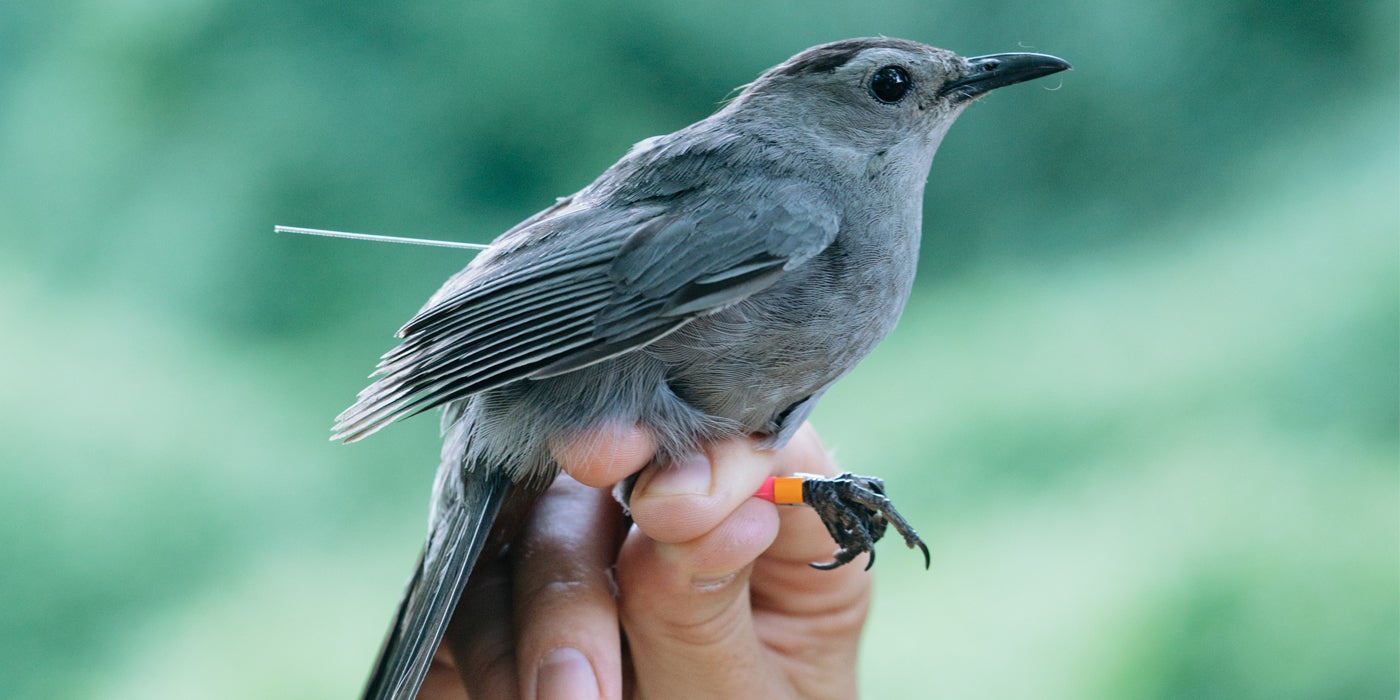What Is Bird Banding?

In order to identify and keep track of individual birds, scientists put aluminum or colored bands on birds' legs. Similar to the license plate on a car, each aluminum band is engraved with a unique set of numbers.
Bird banding is one of the oldest and most important techniques used for studying and identifying individual birds. In the early 1800s, John James Audubon tied threads to birds' legs to identify individuals that were visiting his farm. In 1902, the first scientific study to use bird banding took place in the United States: Smithsonian scientists attached bands to the legs of black-crowned night herons at the Smithsonian's National Zoo in Washington, D.C.
How do researchers band birds?
In many countries, bird banding is regulated by the federal government. In the U.S., the Bird Banding Laboratory (BBL), part of the United States Geological Survey, provides scientists with aluminum bands and keeps records on all banded birds. Scientists must submit an application to receive bands from the BBL. They are required to show proof of their skill in safely handling birds, explain why they need to band birds as part of their research and provide information on where the research will take place. Each bird that is given a tracking device, such as a light-level geolocator or satellite transmitter must also be banded.
Before a bird can be banded, it must be caught. For smaller birds, researchers use mist nets—tall, long nets made of very fine threads that blend into the surroundings. Mist nets are stretched between two poles that are usually placed in the ground, but can also be placed in the canopies of trees. Birds caught in the nets are carefully removed by a highly trained scientist. The scientist will then record information about each bird, such as its species, sex and age, and take measurements, such as its weight and the length of its wings. These measurements help researchers determine how healthy a bird is. A scientist then puts a uniquely numbered aluminum band, and sometimes also colored plastic bands, on the bird's legs. Finally, the bird is released.
When a banded bird is caught again in the future, researchers can learn important information about that bird's life, such as how far it travels and how long it lives. The band numbers of re-caught birds are always reported to the BBL, which compiles the information on where and when each bird is re-caught.
In most studies, researchers encounter less than one in five banded birds between seasons. These chances get increasingly smaller the farther birds travel from the location where they were banded. Because the chances of encountering a banded bird again can be low, banding data is of limited use when it comes to tracking migratory birds throughout their annual cycle. Despite these limitations, banding can be a very useful tool for studying non-migratory birds or birds in their wintering or breeding territory.
Why would a researcher use colored bands in addition to numbered aluminum bands?
Colored bands make it possible for researchers to tell individual birds apart by sight without having to recapture them and read the aluminum band number. Because of this, color-banded birds are more easily identified than birds with only an aluminum band. In a study using color bands, each individual bird will get a unique combination of colored plastic bands, such as a red band over a green band on one leg, and a purple band over the aluminum one on the other.
When a color-banded bird is re-sighted, scientists can use the time and location that the bird was seen to gain valuable information. Identifying the bird one or more times gives an indication of how long it survives. Observations of the color-banded bird at locations outside of the banding site can indicate the distance that the bird moves during or between seasons.
A challenge to color banding is that it takes considerable time and effort to search for and identify the banded birds. The likelihood of re-sighting color-banded birds decreases the farther the bird travels from where it was banded. Because of this, color banding birds is not a great technique to track where birds move throughout their annual cycle. This makes color banding birds a great tool for answering questions about birds that will stay in a certain area throughout a study, but it is of very limited value when researching birds that travel greater distances.
Color bands are inexpensive, usually costing less than a dollar per bird. They are also very lightweight, so they can be worn by all but the smallest of bird species.